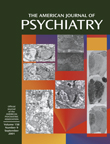We are living in an exciting time. Exciting for us as clinicians and researchers, but most of all for those who are suffering from the disorders that are discussed in these two books. The first edition of Essential Psychopharmacology was so successful that the publishers came back for an update. And an update it is: in addition to the different DSM-IV diagnostic criteria, the latest approved drugs and the related neurotransmitter systems, newer mood stabilizers, cognitive enhancers, sexual arousal mechanisms, hormones, peptides, second messenger systems, and pharmacokinetic principles (e.g., the P450 system) are described as well. Essential Psychopharmacology of Depression and Bipolar Disorder consists of three of the chapters from Essential Psychopharmacology: Neuroscientific Basis and Practical Applications and is for those who want to limit their reading to the mood disorders. There is certainly a gap between what could be done and what happens every day in the clinic. New psychotropic drugs, new mechanisms of actions, and new indications are available to us every day. If all clinicians adhere to the principles laid down in Essential Psychopharmacology: Neuroscientific Basis and Practical Applications, many more patients will be treated effectively.
The revised version is bigger and better. It is a “what is behind the drug effects” and “why you see the side effects that you experience” book, not a “how to prescribe” book. When the psychotropics first became available to our clinicians and patients, very little was known about how and why these drugs work. Drugs were given because they were available and some people seemed to respond magically. Little was known about the principles of effective psychotherapeutics, not to mention how the brain cells communicate and are affected by these compounds. Prescribing was an art based on clinical experience—antidepressants for depressed patients, antipsychotics for schizophrenia, antianxiety agents for anxiety disorders—with many misses and inappropriate doses and drug combinations along the way. Now we have an embarrassment of choices of drugs that can be effective outside the traditional indications and mechanisms of their presumed action. Knowledge regarding which neurotransmitter systems are affected by which drugs and how the body deals with the compounds we prescribe may help in a rational pharmacotherapy, particularly when we have so many dissatisfied customers because of partial efficacy and poor tolerance in some patients, if not poor clinical practice. Clinicians should know and patients want to know why these drugs work and how.
The barrage of neuroscientific and pharmacological data makes it difficult for a busy clinician to grasp why one drug may be preferred over another in a given patient. Dr. Stahl makes the concepts of receptors and neurotransmission visible, palatable, and understandable. He describes how side effects can be interpreted from the drug’s biochemical profile and why presynaptic receptor stimulation can lead to reduced neurotransmission and receptor blockade can lead to greater neurotransmitter release. The style and the cartoons make the book accessible, even after a busy day in the office or laboratory. The regulatory mechanisms for every neurotransmitter are discussed and illustrated with simple cartoons. All antidepressants, mood stabilizers, antipsychotics, and antianxiety agents are presented. Every major psychiatric diagnosis is reviewed in the context of its potential pathophysiology and its psychopharmacological treatment. The pictures are clear and consistent.
It is obvious that a very knowledgeable author, one who understands his topic and his audience, is at work. Dr. Stahl not only teaches psychopharmacology but also is an experienced clinician and researcher. The book comes as a course of psychopharmacology (with CD-ROM versions and continuing medical education questions) as well; it shows how psychopharmacology can be fun to learn. For these reasons people were very excited about the first edition. The same can be expected of this revised edition. I believe Essential Psychopharmacology: Neuroscientific Basis and Practical Applications is probably among the top 10 most influential books in psychiatry.
One reason for its importance is that it will help the prescribing psychiatrist understand the difference between the different selective serotonin reuptake inhibitors that affect their side effects and potentially their efficacy. It will help the clinician use these drugs effectively alone and in combination. Polypharmacy is now more accepted in bipolar disorder, which does not mean that patients will always need the multiple drugs they are prescribed or that the combination therapy is optimally used. This book should assist in making rational comedication decisions. Although simplification of complex information will leave some things open to misunderstanding, Dr. Stahl’s balanced approach seems fair.
Any resident in psychiatry, private practitioner, medical student, clinical researcher, or psychopharmacologist and anyone who wants to know more about the drugs they are taking will enjoy Essential Psychopharmacology: Neuroscientific Basis and Practical Applications. I certainly did. I could not recommend a better book.

